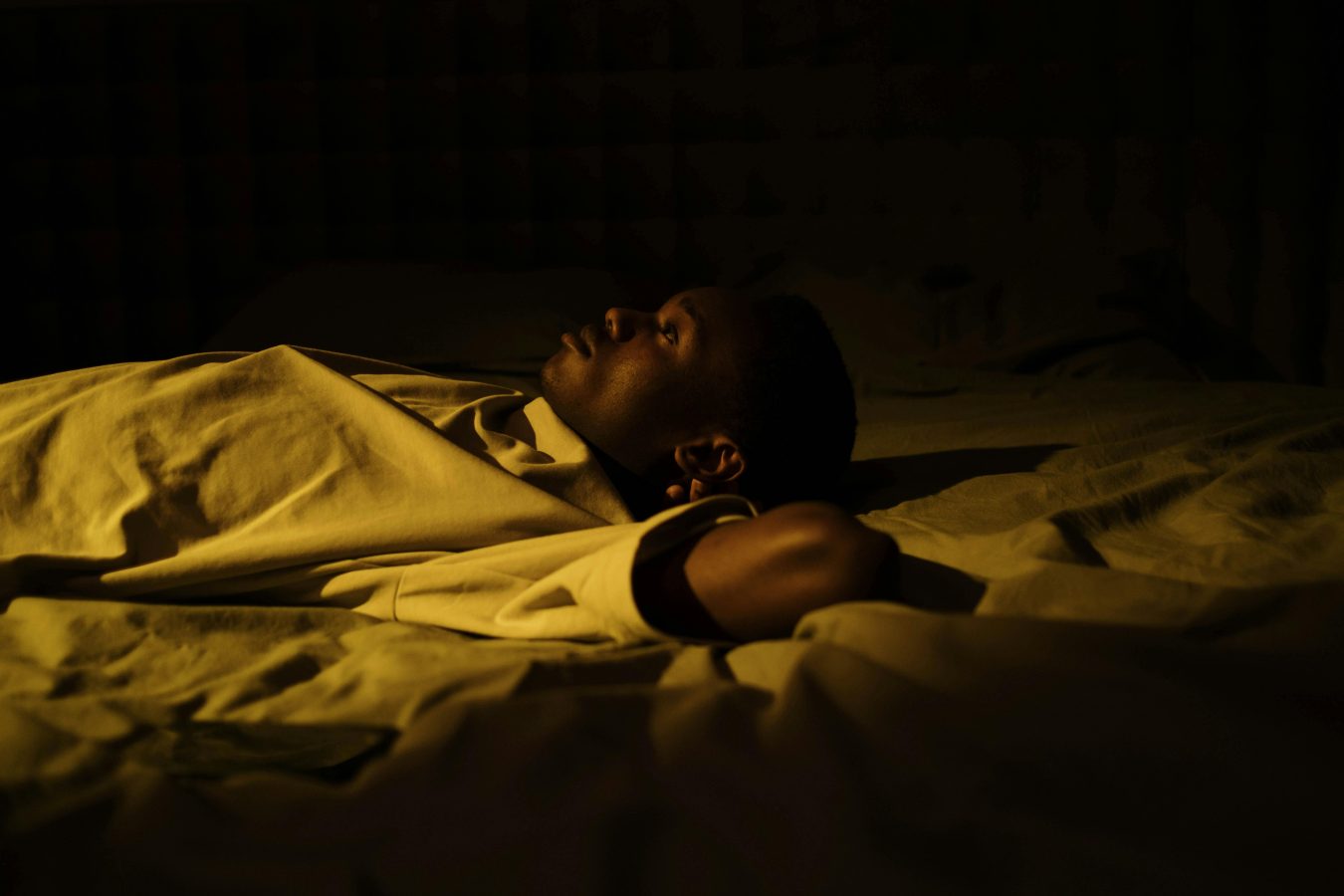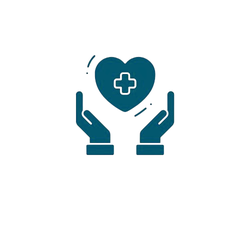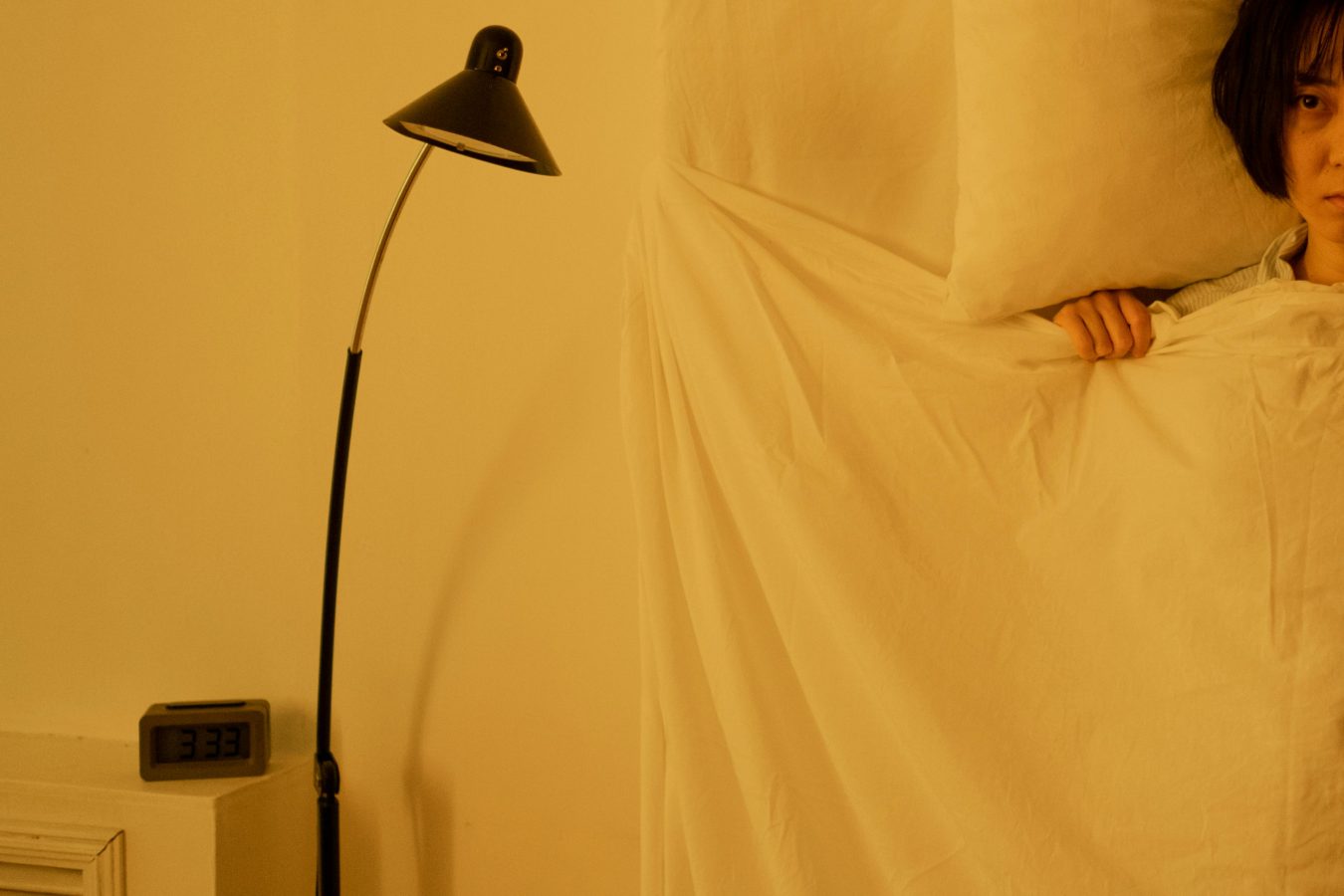Insomnia after 40 is usually a mix of shifting hormones, higher stress, and health conditions that fragment or lighten sleep; the upside is that most drivers are manageable with targeted habits and care.
🚀 Quick Action Plan
- Track three nights to spot patterns — bedtime, wake-ups, caffeine/alcohol timing, screens, symptoms.
- Tune the basics — cool (17–19°C), dark, quiet bedroom; steady wake time; no screens 60 minutes before bed.
- Rule out medical causes — seek care if insomnia persists beyond 4 weeks or if snoring, gasping, or 3–4am awakenings dominate.
Credible sources:
Harvard HealthMayo ClinicPubMed Research
Insomnia after 40 can creep in quietly and then take over your nights. You go to bed at a decent hour, you feel genuinely tired, and yet the moment the lights go off your brain speeds up. On other nights you fall asleep quickly but wake at 3am, wide awake, staring at the ceiling while the room is still and the clock moves too slowly. Some people sleep for seven or eight hours and still wake unrefreshed, as though the night didn’t count. These patterns feel different on the surface, but underneath them sit the same forces: changes in hormones, stress that arrives earlier and stays later, and health issues that matter more in midlife than they used to.
None of this means good sleep is gone for good. It means your old approach stopped matching the new reality. When you learn what actually drives insomnia after 40 — and when you fix those drivers one by one instead of chasing random tips — nights become calmer and days become lighter. This guide explains what insomnia is, why it becomes more common after 40, how the 3–4am wake-up fits in, when sleep apnea is the hidden culprit, what risks come with letting it run for months, and which practical steps truly help.
What is insomnia after 40?
Insomnia after 40 means persistent trouble falling asleep, staying asleep, or waking too early, with real daytime impact: your focus is duller, patience thinner, workouts harder, and mood less stable. Everyone has rough patches; insomnia is when the pattern repeats several nights a week and your days suffer. It is common in midlife, but it is not “just aging” and it responds to targeted changes. The goal is not perfect sleep every night. The goal is a stable rhythm where most nights do their job and mornings feel normal again.
How it differs from “just bad sleep”
A string of late dinners or a stressful week can give anyone a few off nights. With insomnia, however, your system learns the pattern. The bed becomes a place for thinking, not resting; the brain expects a fight and delivers one. That learning can be unlearned, but it takes structure and repetition — the same way a muscle is rebuilt with steady training rather than a single heavy session.
Why does insomnia become more common after 40?
Because the background conditions change. Hormones that supported deeper sleep are lower or fluctuate. Responsibilities crowd the evening and spill into the bedroom through screens. Health issues that were rare at 25 become normal to screen for at 45. Sleep didn’t suddenly become complex; your life did.
Hormonal changes
Perimenopause and menopause bring shifts in estrogen and progesterone that raise body temperature at night and trigger hot flashes, night sweats, and sudden awakenings. For men, gradual testosterone decline is linked with lighter sleep and more awakenings. Melatonin, the hormone that signals “darkness,” is lower for everyone with age, so sleep starts later and breaks easier. You don’t control hormones directly, but you can make them work with you: steadier schedules, brighter mornings, dimmer evenings, and cooler bedrooms give your biology a nudge in the right direction.
Stress and responsibilities
Careers peak, families depend on you, parents may need help, and finances demand attention. That stack keeps arousal high past sunset. You may not feel anxious in the day, but the moment you lie down the mind starts planning, reviewing, and predicting. Evening email and late news add fuel: the brain treats light and novelty like “daytime.” Lowering stimulation in the last hour and adding a short, repeatable wind-down is not decoration — it is the switch that turns the system from “do” into “rest.”
Health conditions and medications
Sleep apnea fragments sleep without your awareness. Restless legs delay sleep with an urge to move. Thyroid and iron issues change temperature control and energy. Reflux wakes you after heavy or late meals. Antidepressants, steroids, decongestants, and some blood pressure drugs alter sleep architecture. None of this is a verdict; it is a checklist. If home changes stall, screening for these drivers often explains months of struggle in a single visit.
Waking up at 3am or 4am after 40: what does it mean?
It often reflects a normal transition between sleep cycles that turns into full alertness when arousal is high. Around those hours your body starts preparing for morning. If stress sits close to the surface, that nudge is enough to flip the lights on.
Natural sleep cycles
Sleep runs in roughly 90-minute cycles that include light, deep, and REM sleep. Brief wakefulness between cycles is normal; most of the time you roll over and drift back. When you glance at the clock, sit up, or start thinking — even for a minute — your brain takes the hint and ramps up. The same two-minute wake that should have passed becomes an hour. The fix is not to fight the clock; it is to keep arousal down: minimal light, no phone, one simple routine you repeat every time.
Cortisol and anxiety
Cortisol naturally rises toward dawn. On calm days you never notice. When stress is high, that rise is the push that wakes you early. If you then check messages or mentally rehearse the day, the brain learns that 3–4am is thinking time and delivers it again tomorrow. Gentle wind-down before bed, morning daylight within an hour of waking, and a consistent wake time retrain that loop in a matter of weeks.
When it signals a medical issue
If early awakenings come with loud snoring, choking, or gasping, suspect sleep apnea. If they pair with hot flashes and night sweats, perimenopause may be front and center. If you wake flat, hopeless, or keyed-up most mornings, screen for mood disorders. The time on the clock matters less than the pattern and the company it keeps.
Could it be sleep apnea after 40?
Yes. Sleep apnea repeatedly narrows the airway during sleep, causing brief breathing pauses and micro-awakenings. You might not remember any of them — you just feel unrefreshed, foggy, and sleepy the next day. Many people think they have insomnia when the real issue is an airway that collapses at night.
Common signs
Loud snoring, dry mouth in the morning, headaches on waking, heavy daytime sleepiness, and a partner noticing pauses or choking. Extra weight and a thicker neck raise risk, but apnea also appears in people who are not overweight, especially after 40 as tissues lose tone.
Why it matters
Untreated apnea raises blood pressure, strains the heart, and worsens memory and mood. The good news is that proper diagnosis and treatment — from positional strategies and oral appliances to CPAP — can transform energy within weeks. If the clues fit, testing is worth it.
Health risks of untreated insomnia after 40
Left to run for months, insomnia does more than make you groggy. It tilts metabolism, frays patience, and accelerates the feeling of aging. The sooner you turn the ship, the easier it is to steady.
Heart and metabolism
Short or broken sleep disrupts glucose control and increases appetite through hormones like ghrelin and leptin. Blood pressure stays higher overnight, and blood vessels repair less efficiently. Over time that means weight creeps up, labs drift the wrong way, and workouts feel harder than they should.
Mood and cognition
Deep sleep is when the brain files memories and resets emotional reactivity. When nights are shallow, recall gets patchier, minor hassles feel bigger, and motivation thins. Anxiety and depression both worsen with poor sleep and in turn worsen sleep — a loop that breaks fastest when you address both sides together.
Aging and resilience
Nighttime is repair time: skin, immune calibration, and hormonal recovery all peak when you sleep well. With chronic insomnia, small infections linger, skin looks duller, and you feel older than your age. The flip side is encouraging: a month of deeper sleep often shows up first in calmer mornings and clearer skin, then in steadier energy across the day.
How to cope with insomnia after 40
You do not need a perfect routine; you need a consistent one. Build a simple plan you can repeat on busy days, not just on ideal ones, and let the results compound.
Sleep hygiene and environment
Pick one wake time you can keep seven days a week and anchor everything else to it. Aim for bright natural light within an hour of waking and dimmer light in the hour before bed. Keep the bedroom cool, quiet, and dark; cover LEDs and move glowing clocks out of sight. Reserve the bed for sleep and intimacy so your brain relearns the bed-sleep link.
Evening habits
Stop caffeine by early afternoon. Leave alcohol and heavy meals at least three hours before bed. Swap late scrolling for something low-arousal: light reading, stretching, or a warm shower. If your mind races, write tomorrow’s top three tasks on a card and put it face down — you’ll handle them with a rested brain.
Stress reduction
Five minutes is enough when you repeat it nightly. Try four-count breathing, a short body scan from toes to scalp, or a simple gratitude note. The content matters less than the cue: the brain learns that this sequence means sleep is next. If you wake at night, use the same routine with minimal light and no phone to keep arousal low.
Medical support
Cognitive Behavioral Therapy for Insomnia (CBT-I) is first-line and highly effective; it rebuilds sleep drive and reshapes your sleep window. Short-term medication can help in transitions, but durable gains come from behavior, light, and timing. If you snore, gasp, or wake with headaches, talk to your doctor about a sleep study. If mood is low or worry is constant, treating those directly will make sleep easier and more stable.

When to seek professional help
Ask for help if insomnia lasts longer than a month, harms daytime function, or includes snoring, gasping, or breathing pauses. You are not being dramatic; you are preventing bigger problems and saving months of frustration.
Red flags and next steps
Morning headaches, extreme sleepiness, memory slips, bed-partner reports of apnea, and persistent night sweats deserve evaluation. A clinician may check thyroid and iron, review medications, and order a sleep study if needed. Treatment is effective and worth it — the payoff is better nights and the return of your normal self in the daytime.
Related Articles
Take Control of Your Sleep
Insomnia after 40 is common but fixable. Steady routines, lower evening arousal, smart light timing, and timely medical checks bring deeper nights and brighter days. Start tonight with one small change and let the habit do the heavy lifting.
FAQs about Insomnia After 40
Why do I wake up at 3am or 4am after 40? A natural cortisol rise plus stress can flip a brief cycle transition into full alertness at those hours.
Is insomnia after 40 just normal aging? No — some change is common, but persistent insomnia is not “normal” and responds well to targeted habits and care.
Could my insomnia be sleep apnea? If snoring, gasping, or morning headaches are present, apnea may be the driver and a sleep study can clarify it.

